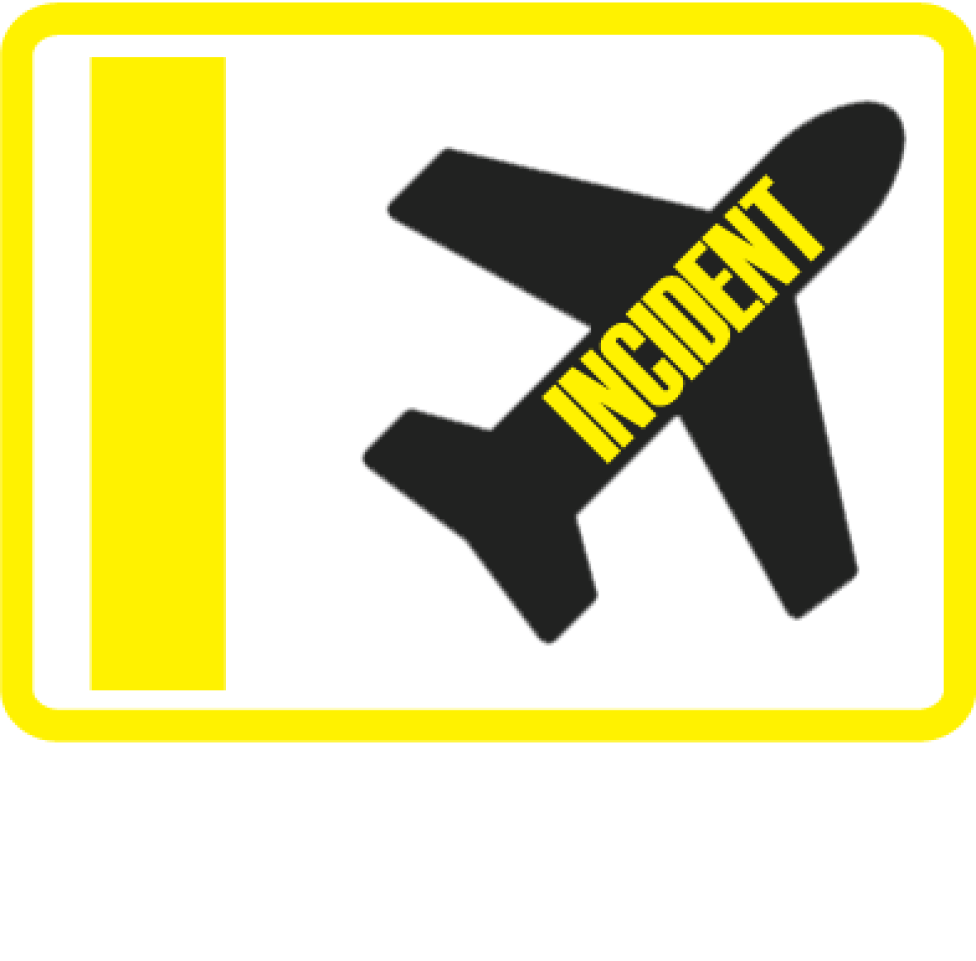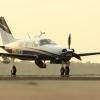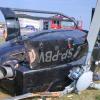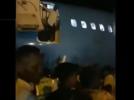BinAir SW4 near Langeland on Jun 11th 2013, near collision with military formation
A BinAir Aero Service Swearingen SA-227AC Metro, registration D-CAVA performing a passenger flight from Cologne/Bonn (Germany) to Vasteras (Sweden), was enroute at FL190 near Langeland (Denmark).
A military formation consisting of two F-16s was operating visually near Langeland and had been assigned a block altitude from FL180 to FL190. During their maneouvers the F-16s flew a turn onto a heading that led straight towards D-CAVA, the F-16s climbed to FL189 until the TCAS in all aircraft issued resolution advisories instructing the Metro to climb and the F-16s to descend.
Denmarks HCL (Havarikommissionen) reported the F-16s passed the Metro about 200 feet below and 0.5nm behind. The Metro and the formation were on different frequencies. The crews sighted the conflicting aircraft just moments before the aircraft passed each other. An investigation has been opened.
On Jun 5th 2014 Denmark's HCL released their final report in Danish concluding:
- The HCL believes that the rate at which the aircraft approached each other in approximately the same flight level activated TCAS Traffic and Resolution Advisories in the airliner, which - despite the fact that the airliner crew established visual contact shortly before the aircraft passed each other - made the airliner crew believe there was insufficient distance for the military aircraft to pass.
- There may have been doubts as to who had the right of way.
Contributing factors
- The crews were operating on different frequencies and the airliner crew was not informed about the intention of the military formation.
- Air Traffic Control - respectively Flight Information Service - should instruct IFR traffic and recommend VFR traffic to use flight levels providing sufficient separation to training flights operating in altitude block clearances in the expectation that those training flights are going to use the minima and maxima of their block clearances.
- The military procedure to "turn into the traffic" is not considered appropriate in conflict with civil aircraft when the distance between the aircraft involved likely activates TCAS traffic or resolution advisories.
- It is to be expected that the civil pilots will not always be able to obtain visual contact with the conflicting military traffic as early as the opposite may be true and therefore are likely to follow their TCAS resolution advisories (this is especially true with respect to sizes of aircraft, use of radar, expected flight patterns, ...)
The HCL recommended that military flights past civil aircraft should be carried out in a sufficient distance to avoid the activation of TCAS advisories.
The HCL reported that the defense forces as well as air traffic control units have examined the occurrence in order to prevent similiar events in the future.
The HCL reported that the Swearingen, operating under instrument flight rules, was enroute at FL190 in a northeasterly heading and was in contact with air traffic control center Copenhagen. At the same time a formation of two F-16s, in contact with flight information service at Denmil, had been cleared to operate between FL180 and FL190 under visual flight rules. The formation was advised of the presence of the civil airliner.
The Swearingen crew subsequently noticed the formation on their TCAS display about 15nm ahead of their position, about 12 to one o'clock position, at FL180 and reported the traffic to ATC, who in turn instructed the Swearingen crew to maintain their own separation.
About three minutes later the Swearingen crew observed the other traffic at FL189 still in their 12 to 1 o'clock position however making a right hand turn onto a southwesterly heading appearing to be directly head on with the Swearingen, 100 feet vertical and 5nm lateral separation, at combined rate of closure at 750 knots.
Denmil informed the fighter crew that they had an aircraft at 12 o'clock 7nm at FL190 flying in northeasterly direction.
30 seconds after the Swearingen crew noticed the traffic heads on the crew reported a TCAS traffic advisory, the crew reported they had no visual contact with the conflicting traffic, only saw him on TCAS display, but immediately afterwards advised they had acquired visual contact.
Denmil in the meantime inquired with the military crew whether they had received his traffic advisory, the crew affirmed and advised they had no visual contact with the traffic. The controller queried the intention of the military pilots who advised they want to fly past the civil aircraft.
The Swearingen crew reported a TCAS resolution advisory to climb and initiated a climb reaching FL193 when the TCAS announced clear of conflict.
At the closest point the separation had reduced to 200 feet vertical and 0.5nm laterally, the Swearingen was enroute at 256 knots over ground and the closest military aircraft at 496 knots over ground.
The HCL re-iterated the rules for operation in the presence of other (conflicting) aircraft:
- an aircraft is not permitted to fly so close to another aircraft that a danger of a collision arises.
- when two aircraft approach each other, the aircraft not having the right of way has to give way to the other considering also the effect of wake vortices to avoid passing over, under or before the other aircraft unless this is being done in a safe distance.
- if two aircraft approach each other in opposite or nearly opposite courses involving the danger of a collision, both aircraft turn to their right.
- if two aircraft are on intersecting trajectories on the same or nearly same altitude the aircraft having the other to its right has the right of way.
The HCL analysed that both military pilots carried out a training mission which required the lead pilot to focus on the cockpit instrumentation and the wingman to look out. Therefore the lead pilot had reduced time to look out for other traffic. Both military pilots were under the impression by their clearance to be able to freely chose their altitude between FL180 and FL190 according to their block clearance and were under the impression that air traffic control would provide separation to other aircraft, hence they did not need to give consideration to other traffic.
Military procedures were frequently used to turn into the other traffic to acquire visual contact as soon as possible and then conduct evasive maneouvers as necessary.
The HCL analysed that there remained doubt which rule for de-conflicting traffic would apply, the rule of opposing traffic forcing both aircraft to turn right or the rule of intersecting traffic (which would force the military aircraft to give way to the civil aircraft in this scenario). The HCL considers the rules ambiguous in the scenario present.
The trajectories of lead F-16 [fly B], wingman F-16 and D-CAVA [fly A] (Graphics: HCL):
http://avherald.com/h?article=468523ec














Komentarze